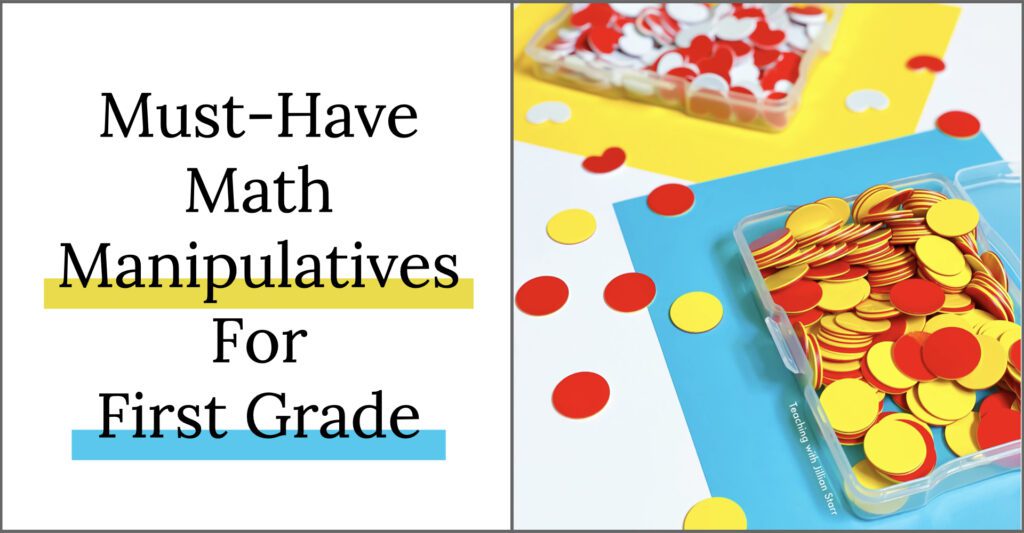
What if I told you that you could transform your math block with these five must-have first grade math manipulatives? If you know me, you know I LOVE teaching math. But I didn’t always have the tools to do it successfully.
Time after time, if I couldn’t provide my first graders with significant visual and tactile representations, we would often just hit a wall. I needed to find ways to help them go from physical, concrete understanding to abstract thinking about numbers. That’s how my collection of math manipulatives for first grade began. Over the years, math manipulatives have become my jam.
Friends, I can’t even tell you how many hours (days?) I’ve spent scouring the internet looking for the just-right first grade math manipulatives for my classroom. It might even be my favorite kind of online shopping. So that’s why I just can’t wait to share my five favorite math manipulatives for first grade to make your math centers a success!
You can click on any of the headings below for an Amazon affiliate link, where you can find a direct link to the specific manipulative I use in my classroom. If you happen to order one of the manipulatives from the link provided, I earn a small percentage of that sale, which goes towards the maintenance of my blog.
Unifix Cubes
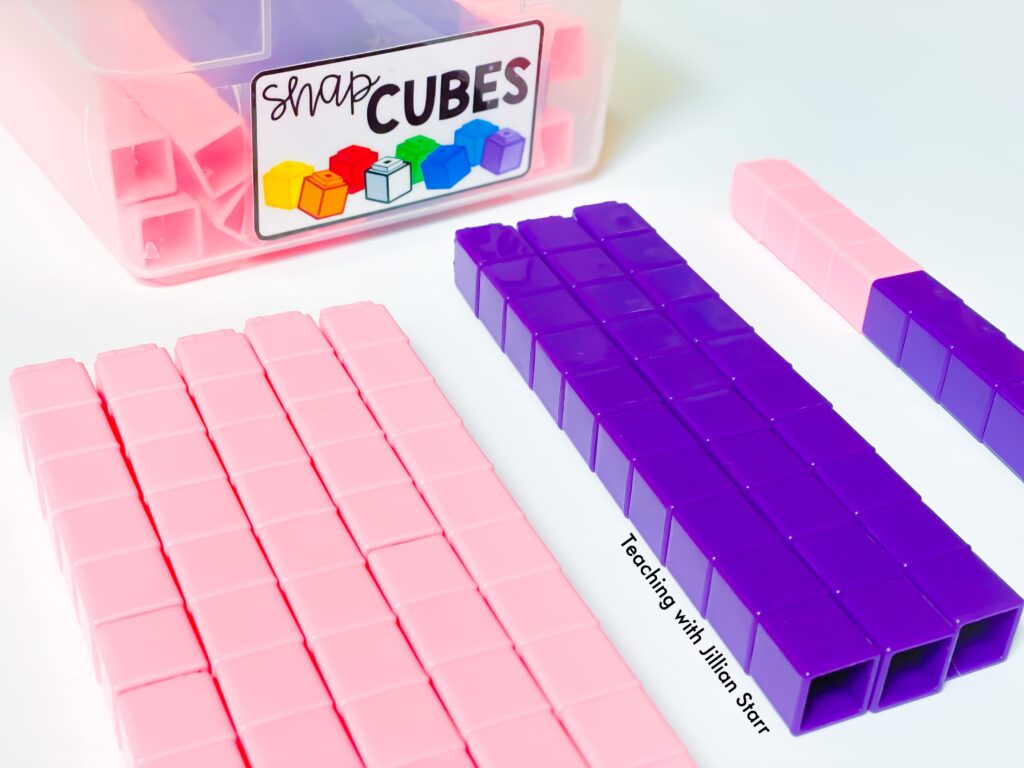
For me, there is one first grade math manipulative that no teacher should be without: unifix cubes! Unifix cubes have transformed my young students’ math learning and are arguably the most important and versatile math manipulative for first grade.
In first grade, we are still working with low numbers (mostly under 20). Unifix cubes are an excellent alternative to base ten blocks. In fact, I prefer them.
When using unifix cubes, we can support TWO concepts with one first grade math manipulative. One example you’ll see every day in my classroom: students building their own sticks of ten to practice number composition and decomposition. With time, they will organically begin composing higher and higher numbers, and as they get more advanced they can literally construct hundreds out of tens. This process beautifully sets the stage for our work with place value. The ability to compose and decompose numbers is crucial to any first grader’s mathematical foundation of understanding.
One more plug for unifix cubes– use them for quick assessment! Informal assessments like “In the Bag” are no-prep and hands-on ways for use to quickly check a student’s math thinking!
2-Sided Counters
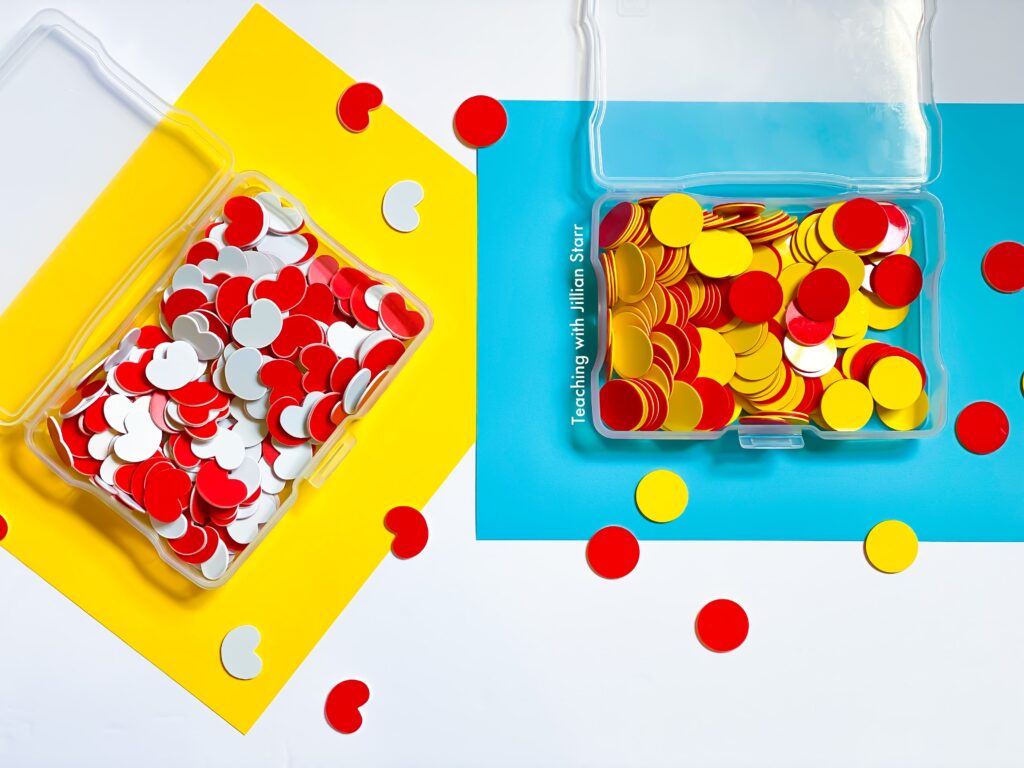
2-side counters are another one of the best first grade math manipulatives for building number sense. I use them in a dozen center activities, especially my addition and subtraction centers. Not to mention, their shape and design are perfect for tens-frame activities.
One of my FAVORITE activities with 2-sided counters is Spill A Sentence! Students spill a specific number of counters. They observe how many of each color is right side up. They color in circles to record their spill. Then, they record a number sentence to represent their spill. Sounds so simple, right? Yet this is always a year-round favorite go-to game in my classroom. Sometimes simple is all we need!

Addition & Subtraction Pack
Dice, Dice, and MORE DICE!

I’ve been thinking about mottos for differentiation. One would be: ALL YOU NEED TO DO IS CHANGE THE DICE! I love dice. I have a slight obsession. So much so, that I have designed an entire dice organizer. But my love of dice is not unwarranted! In order to differentiate, all you need to do sometimes is change the dice! This is why dice will always be one of my go-to math manipulatives for first grade.
For first grade, I love to have a variety of dice. My first grade dice organizer includes numerals, dots, and 3-12 sided dice.
How do I use all these dice to differentiate my activities? Easy! After a quick assessment, I match the dice to a student’s conceptual strength and their working number. Dots encourage students to continue one-to-one correspondence across levels. The ten frame dice are phenomenal for activities involving ten frames. Numerals are quick and easy for kids who are ready.
Working number and dice make a great partnership for differentiation. For example, if a student’s working number is 5, they play each activity with dice 1-5 or 0-5. If their working number is 8, they use dice that go up to 8. This way all of my students are doing the same activity, but it is tailored to their exact needs! Dice are one of favorite manipulatives in first grade that offer multiple entry points so all students are working at their just-right levels.
Ten Frames – and Double Ten Frames!
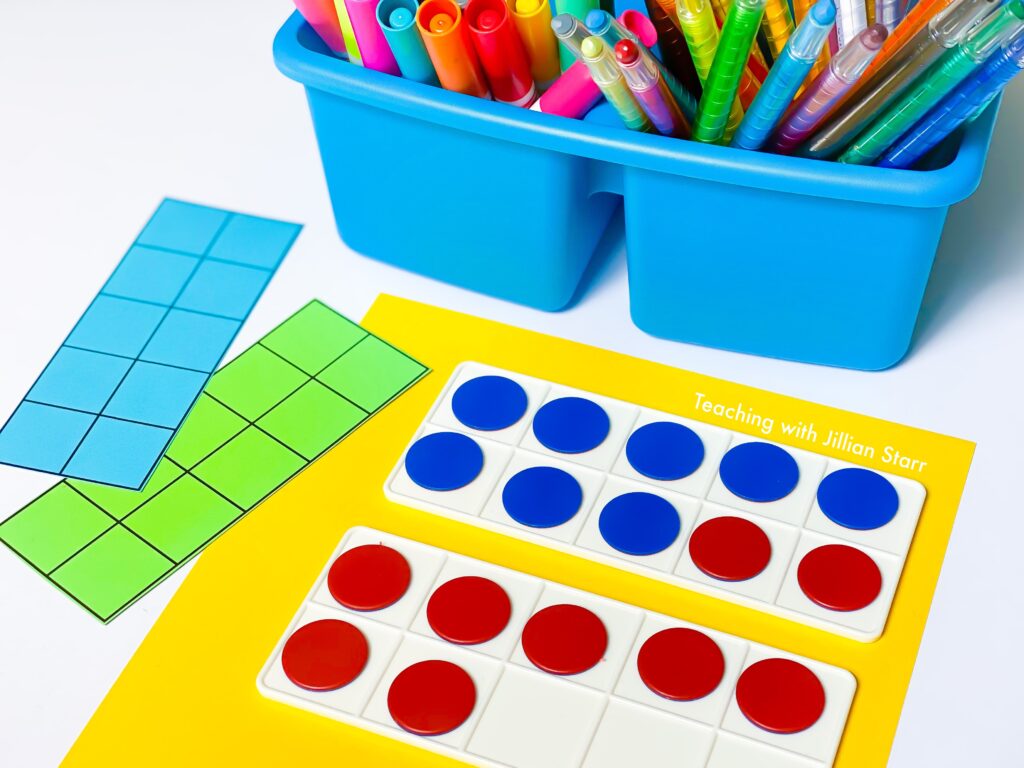
I couldn’t leave ten frames off this list! Ten frames are a staple in any collection of first grade math manipulatives. They are a key tool to support the learning of composition and decomposition of ten, which we know is one of the most significant building blocks in foundational math knowledge.
Ten frames are also incredible tools for reinforcement of combinations of 5, 10, and 20. Additionally, reinforcement of these numbers helps develop strategies for mental math! As students grow in their understanding, I also love using double ten frames. They show the connection between tens and twenties, providing visual support for those learners who sometimes get stuck on those tricky teen numbers, and opportunities for work with two-digit numbers for those who are ready.
You can grab yourself some free ten-frame sets in my Printable Math Manipulatives Pack!
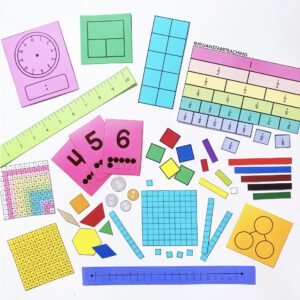
Free Printable Math Manipulatives
Need to keep students supplies separate, but still want them to have access to ALL the math manipulatives? Grab these free printables and problem solved!
Numeral Playing Cards


This list wouldn’t be complete without playing cards– NUMERAL playing cards that is. If you’re unfamiliar with the term or don’t believe that they are a useful math manipulative for first grade, let me explain!
Numeral playing cards are simple cards with numerals on them. They can be used for centers, small groups, and even whole group lessons.
These cards are so versatile, which is why they will always have a place on my shelf as one of my all-time favorite first grade math manipulatives. I love using them to play classic games like Memory or Go Fish. Even more amazing… they are self-correcting! Mis-matches are quickly caught at the end of the game. Students can go back through their pairs and identify misunderstandings.
My absolute favorite numeral playing cards are ones with ten frames on the cards themselves. This way the cards sneakily reinforce mental math understanding of composing 10 while connecting a concrete number to the abstract numeral! As I’m sure you can tell by now, I love an opportunity to sneak in the reinforcement of skills!
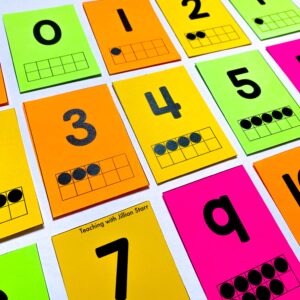


Free 10 Frame Playing Cards
Upgrade the playing cards in your classroom to include ten frames! This will immediately help reinforce skills like composing and decomposing ten, as well as subitizing with ten fames! WIN/WIN!
I hope this list of my five favorite math manipulatives for first grade helps give you some ideas about how to grow your own math manipulative collections! Do you have a favorite I missed? Share with us!
Loving this post? Check out my top five must-haves for second grade!
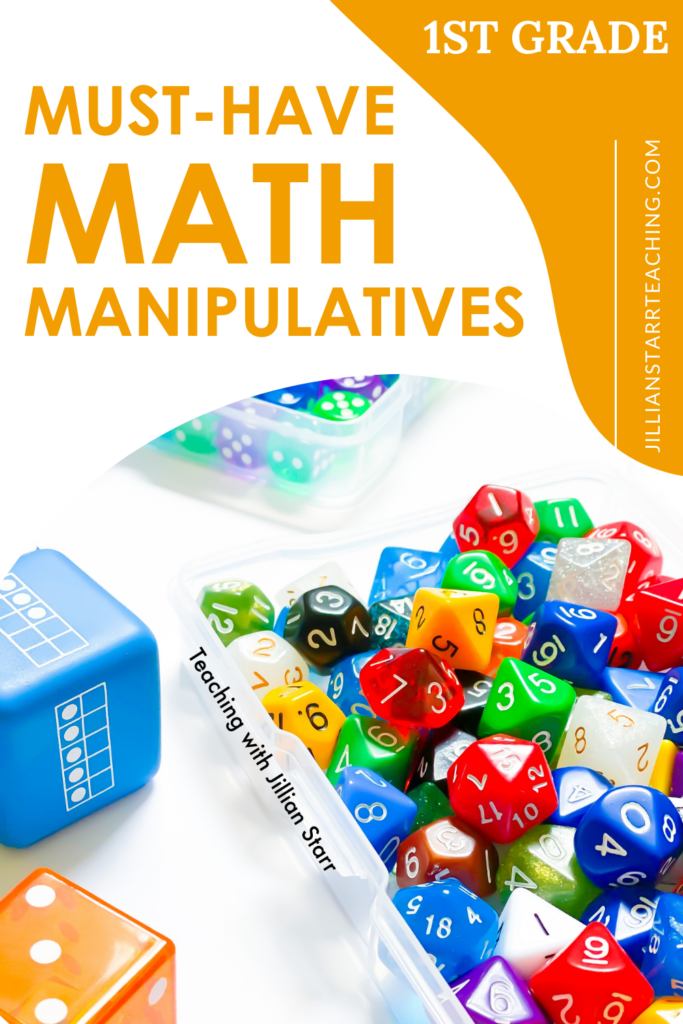



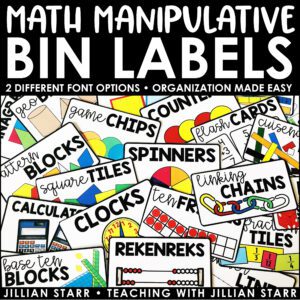

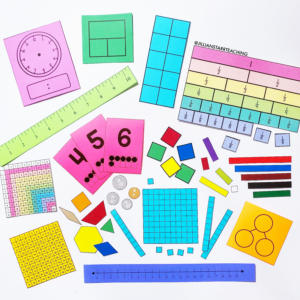
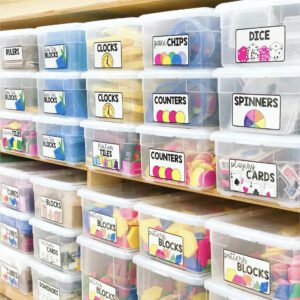
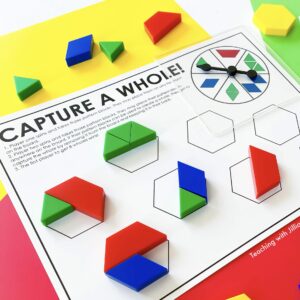
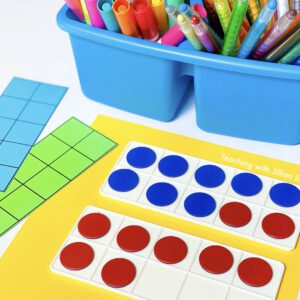



Thank you for this share. It will definitely helped me and my learners . More powers and God bless you.